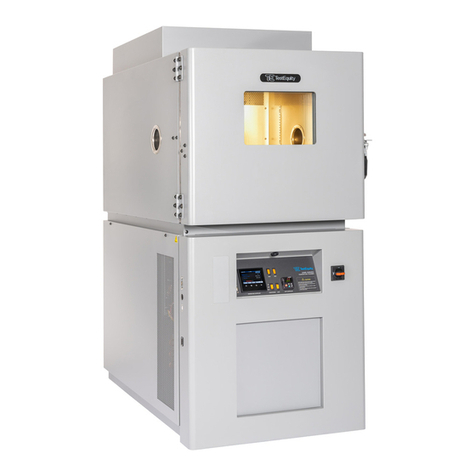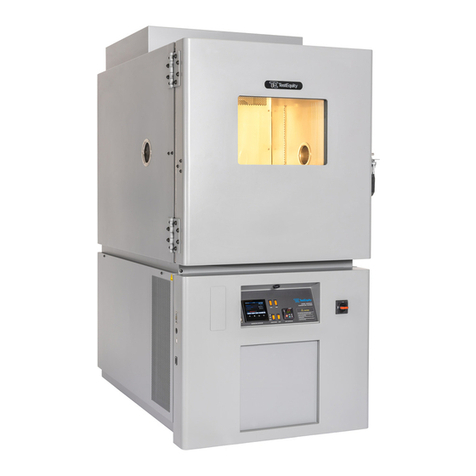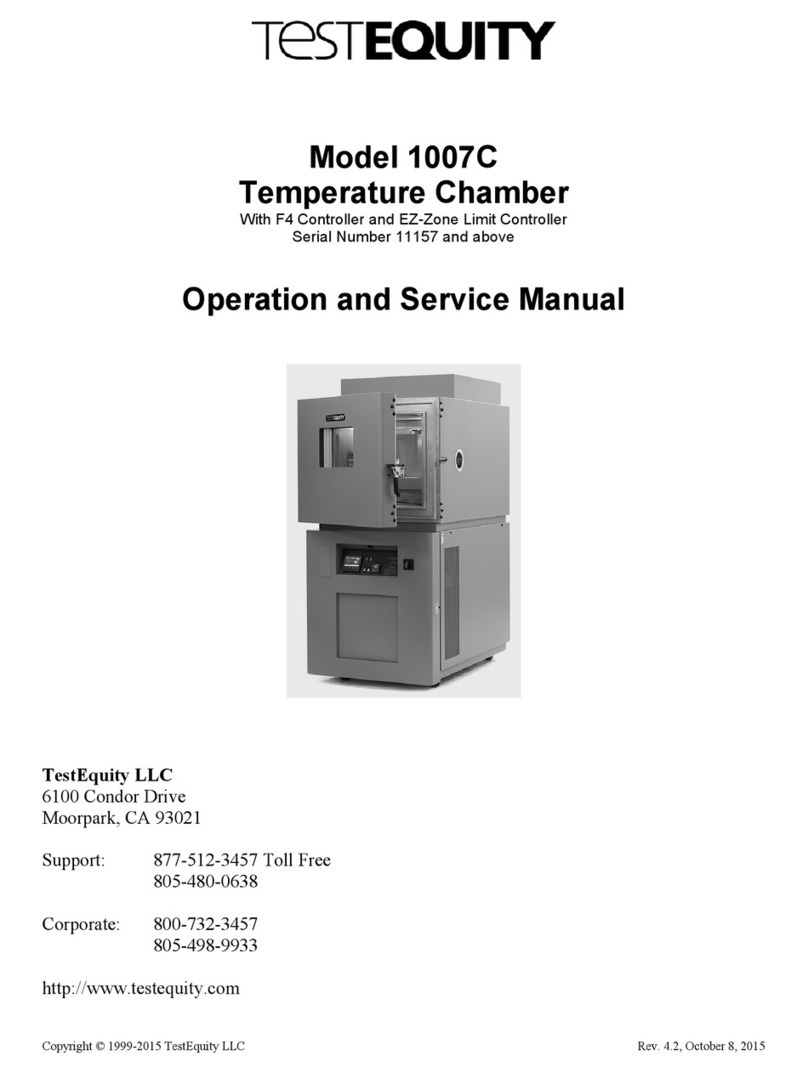
Table of Contents
Chapter 1 – Safety Instructions................................................................................................ 1-1
Introduction ____________________________________________________________________________ 1-1
Installation Safety Notices_________________________________________________________________ 1-1
Operation Safety Notices__________________________________________________________________ 1-1
Chapter 2 – Installation............................................................................................................. 2-1
Unpacking______________________________________________________________________________ 2-1
Preparation For Use _____________________________________________________________________ 2-1
Installation Location _____________________________________________________________________ 2-1
Condensate Drain _______________________________________________________________________ 2-2
Reversible Chamber Door (Model 107 only)__________________________________________________ 2-2
Chapter 3 – Operation............................................................................................................... 3-1
Introduction ____________________________________________________________________________ 3-1
Summary of Chamber Operation___________________________________________________________ 3-1
Front Panel Switches _____________________________________________________________________ 3-1
POWER Switch................................................................................................................................................ 3-1
TEMP Switch – ON Mode............................................................................................................................... 3-1
TEMP Switch – EVENT 1 Mode..................................................................................................................... 3-1
Loading the Chamber ____________________________________________________________________ 3-2
Performance Considerations ............................................................................................................................ 3-3
Avoiding Moisture ........................................................................................................................................... 3-3
Internal Test Fixtures ....................................................................................................................................... 3-3
Chapter 4 – Limit Controller.................................................................................................... 4-1
Introduction ____________________________________________________________________________ 4-1
Limit Controller Keys and Displays................................................................................................................. 4-2
How to Set the High and Low Temperature Safety Limits .............................................................................. 4-2
Resetting an Out of Limit Condition................................................................................................................ 4-2
Chapter 5 – Frequently Asked Questions................................................................................ 5-1
Chapter 6 – Specifications......................................................................................................... 6-1
Model 106 & 107 Chamber Specifications____________________________________________________ 6-1
Chapter 7 – Maintenance .......................................................................................................... 7-1
Preventive Maintenance Schedule __________________________________________________________ 7-1
Daily or As Needed.......................................................................................................................................... 7-1
Every 6 Months................................................................................................................................................ 7-1
Every 12 Months.............................................................................................................................................. 7-1
How to clean the chamber interior and exterior ............................................................................................... 7-2
How to listen for abnormal noise or vibration ................................................................................................. 7-2
How to inspect the door seal ............................................................................................................................ 7-2
How to clean the condenser ............................................................................................................................. 7-2
How to inspect the electrical/refrigeration compartment ................................................................................. 7-3
How to verify the chamber performance.......................................................................................................... 7-4
How to verify the calibration ........................................................................................................................... 7-5
Theory of Operation _____________________________________________________________________ 7-6
Overview.......................................................................................................................................................... 7-6
Heating System ................................................................................................................................................ 7-6
Refrigeration System........................................................................................................................................ 7-6
Troubleshooting _________________________________________________________________________ 7-7
Refrigeration System Charging Instructions _________________________________________________ 7-8
R-410A Charge ................................................................................................................................................ 7-8
Recommended Spare Parts ________________________________________________________________ 7-9
Major Electrical Parts____________________________________________________________________ 7-9
Major Refrigeration Parts ________________________________________________________________ 7-9
General Parts ___________________________________________________________________________ 7-9

































